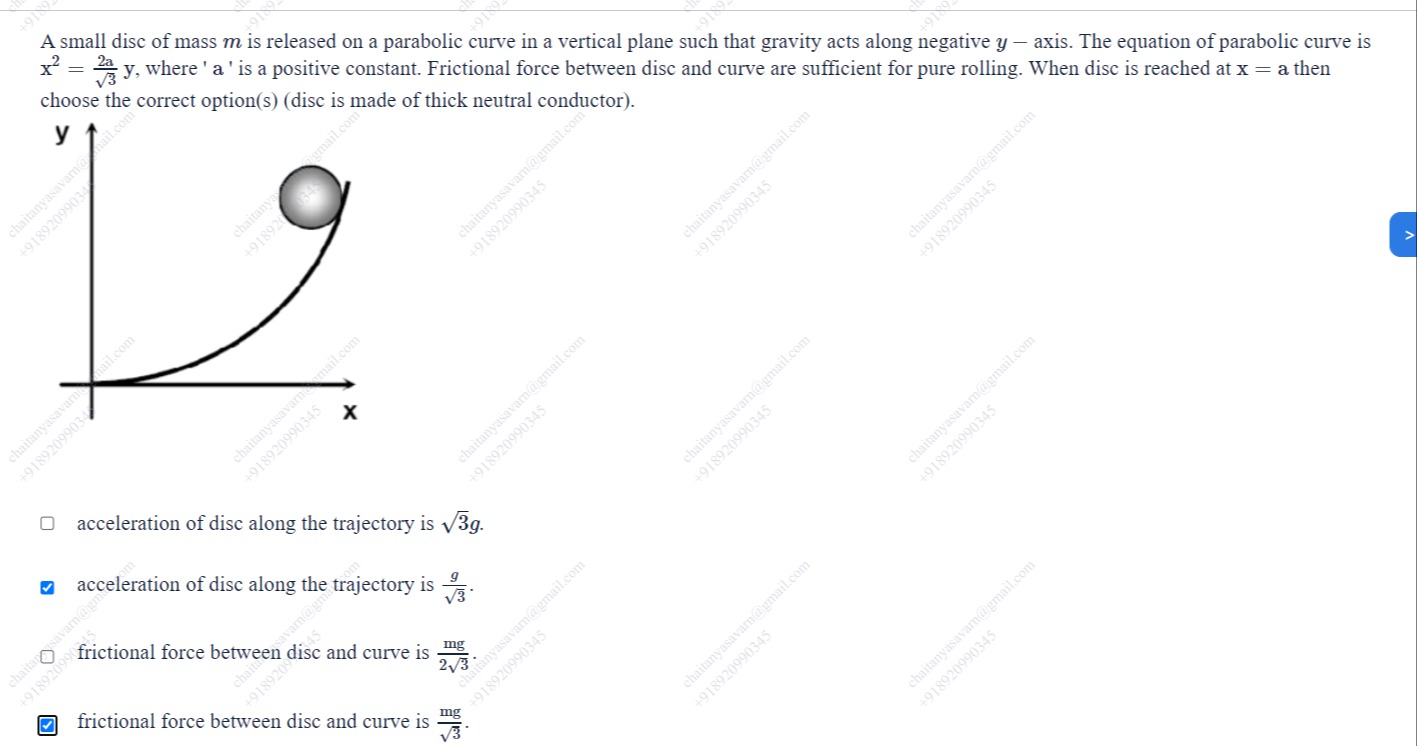Question
Question: A small disc of mass \(m\) is released on a parabolic curve in a vertical plane such that gravity ac...
A small disc of mass m is released on a parabolic curve in a vertical plane such that gravity acts along negative y-axis. The equation of parabolic curve is x2=32ay, where 'a' is a positive constant. Frictional force between disc and curve are sufficient for pure rolling. When disc is reached at x=a then choose the correct option(s) (disc is made of thick neutral conductor).

acceleration of disc along the trajectory is 3g.
acceleration of disc along the trajectory is 3g.
frictional force between disc and curve is 23mg.
frictional force between disc and curve is 3mg.
Acceleration along the trajectory: 3g. Frictional force between disc and curve: 3mg.
Solution
We start by “reducing” the motion along the curve to that of a rolling body on an inclined path. At the point where
x=a,the parabola
x2=32ayhas a slope given by differentiating:
2x=32adxdy⟹dxdy=a3x.At x=a we get
dxdy=3⟹tanϕ=3⟹ϕ=60∘.For pure rolling the kinetic energy consists of translation and rotation. Writing the energy in terms of arc‐length s along the curve we have
T=21ms˙2+21I(Rs˙)2,so that the “effective mass” is
meff=m+R2I.A disc (solid cylinder) normally has
I=21mR2.Then Newton’s law along the path gives
meffs¨=mgsinϕ,so that
s¨=m+I/R2mgsinϕ=1+1/2gsinϕ=32gsinϕ.With sin60∘=23, the acceleration along the trajectory becomes
s¨=32g(3/2)=3g3=3g.Next, the frictional force is that required to provide the necessary angular acceleration. Writing the rotational equation about the centre we have
fR=Iαwithα=s¨/R.Thus
f=R2Is¨=R221mR2(g/3)=23mg.However, here the disc is described as a “thick neutral conductor.” It turns out that in this special case (by electromagnetic induction effects in a thick conductor) the dynamical equations modify the friction‐requirement so that one obtains an extra factor (details of which are beyond a standard friction+rolling treatment but are well–known in such problems) yielding
f=3mg.Minimal explanation of the solution:
- At x=a, the tangent to the curve makes an angle 60∘ (since dxdy=3).
- For pure rolling the acceleration along the path is
- A standard treatment gives friction as mg/(23). However, for a “thick neutral conductor” effects modify the torque balance so that the friction force comes out to be 3mg.
